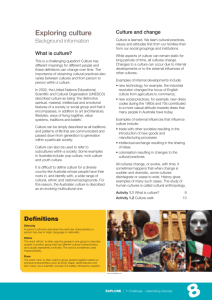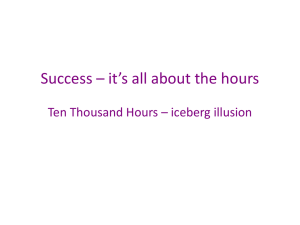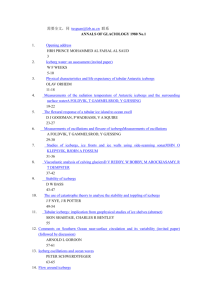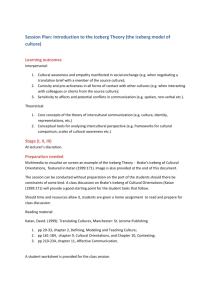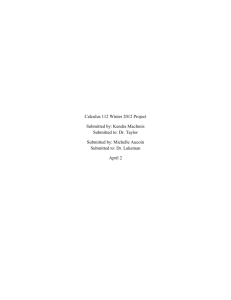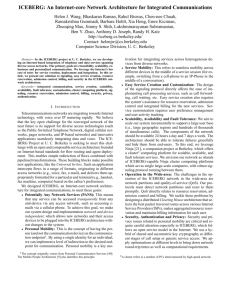Culture
advertisement
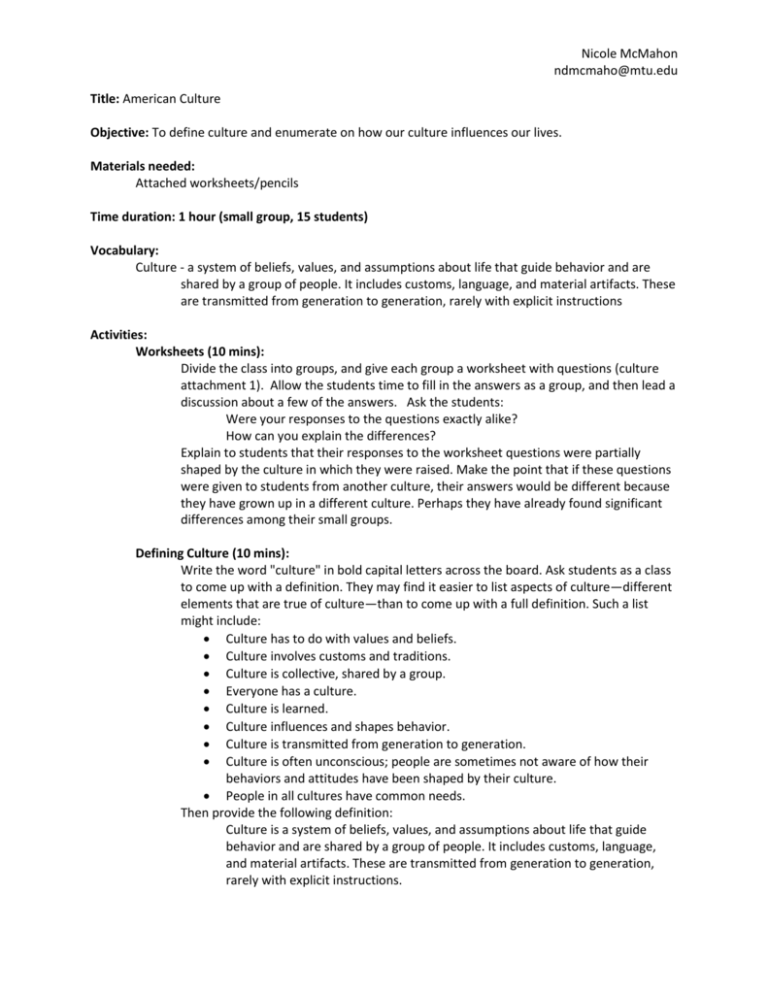
Nicole McMahon ndmcmaho@mtu.edu Title: American Culture Objective: To define culture and enumerate on how our culture influences our lives. Materials needed: Attached worksheets/pencils Time duration: 1 hour (small group, 15 students) Vocabulary: Culture - a system of beliefs, values, and assumptions about life that guide behavior and are shared by a group of people. It includes customs, language, and material artifacts. These are transmitted from generation to generation, rarely with explicit instructions Activities: Worksheets (10 mins): Divide the class into groups, and give each group a worksheet with questions (culture attachment 1). Allow the students time to fill in the answers as a group, and then lead a discussion about a few of the answers. Ask the students: Were your responses to the questions exactly alike? How can you explain the differences? Explain to students that their responses to the worksheet questions were partially shaped by the culture in which they were raised. Make the point that if these questions were given to students from another culture, their answers would be different because they have grown up in a different culture. Perhaps they have already found significant differences among their small groups. Defining Culture (10 mins): Write the word "culture" in bold capital letters across the board. Ask students as a class to come up with a definition. They may find it easier to list aspects of culture—different elements that are true of culture—than to come up with a full definition. Such a list might include: Culture has to do with values and beliefs. Culture involves customs and traditions. Culture is collective, shared by a group. Everyone has a culture. Culture is learned. Culture influences and shapes behavior. Culture is transmitted from generation to generation. Culture is often unconscious; people are sometimes not aware of how their behaviors and attitudes have been shaped by their culture. People in all cultures have common needs. Then provide the following definition: Culture is a system of beliefs, values, and assumptions about life that guide behavior and are shared by a group of people. It includes customs, language, and material artifacts. These are transmitted from generation to generation, rarely with explicit instructions. Nicole McMahon ndmcmaho@mtu.edu Use the following questions to focus discussion on the role culture plays in forming our behaviors and beliefs: How do you think you learned your culture? How do you think your culture has shaped you? How has it influenced your values, preferences, and beliefs? Despite the differences in culture in our class, what are some things that everyone in our class has in common? How does culture shape the way we see ourselves, others, and the world? Culture Is Like An Iceberg (15 mins): o Explain that metaphors often help us understand big ideas by relating something we don't know to something we do know. A useful metaphor for culture is an iceberg. Ask students what they know about the size and shape of icebergs. How much of an iceberg is above the water? How much is underwater? o Make the point that only about one-eighth of an iceberg is visible above the water. The rest is below. Culture is very similar to an iceberg. It has some aspects that are visible and many others that can only be suspected, guessed, or learned as understanding of the culture grows. Like an iceberg, the visible part of culture is only a small part of a much larger whole. o Provide students with a copy of an outline drawing of an iceberg and ask them to draw a line delineating the part of the iceberg that is above the water's surface and the larger part that is below the surface. o Announce the following cultural features and ask the students to decide as a group if a particular feature belongs above the line (i.e., is "visible") or below the line (i.e., is "invisible"). Style of dress Ways of greeting people Importance of Time Paintings Values Literature Beliefs about child raising Attitudes about personal space Holiday customs Music Dancing Foods Work Ethic Religious Beliefs Religious Rituals Rules of Polite Behavior The Role of Family o When completed draw an iceberg on the board, and call the groups to categorize a few of the features and explain their decision. Nicole McMahon ndmcmaho@mtu.edu American Culture (20 mins): Students will examine what it means to be “American” in the eyes of people from other cultures. Read the statements from the cultural anthropologists on the attached worksheet (culture attachment 2) to the students and have them discuss whether or not they believe the statements are true. After discussion, read the professionals’ answer and write the specific trait on the board. Emphasize that not everybody is the same, and may not adhere to every cultural value, but it is true for the majority of the population. Informality (being casual and down-to-earth) Self-reliance (not looking to others to solve your problems) Efficiency (getting things done quickly and on time) Social equality (treating everyone the same) Assertiveness (saying what's on your mind) Optimism (believing that the best will always happen) Assessment/Evaluation (5 mins): Read the definition of culture aloud, again, stopping at each characteristic (e.g., system of beliefs) and having the students give some examples about each characteristic. Resources: http://www.peacecorps.gov/wws/educators/lessonplans/lesson.cfm?lpid=347&gid=2 http://www.peacecorps.gov/wws/educators/lessonplans/lesson.cfm?lpid=346&gid=2 http://www.peacecorps.gov/wws/educators/lessonplans/lesson.cfm?lpid=350&gid=2

